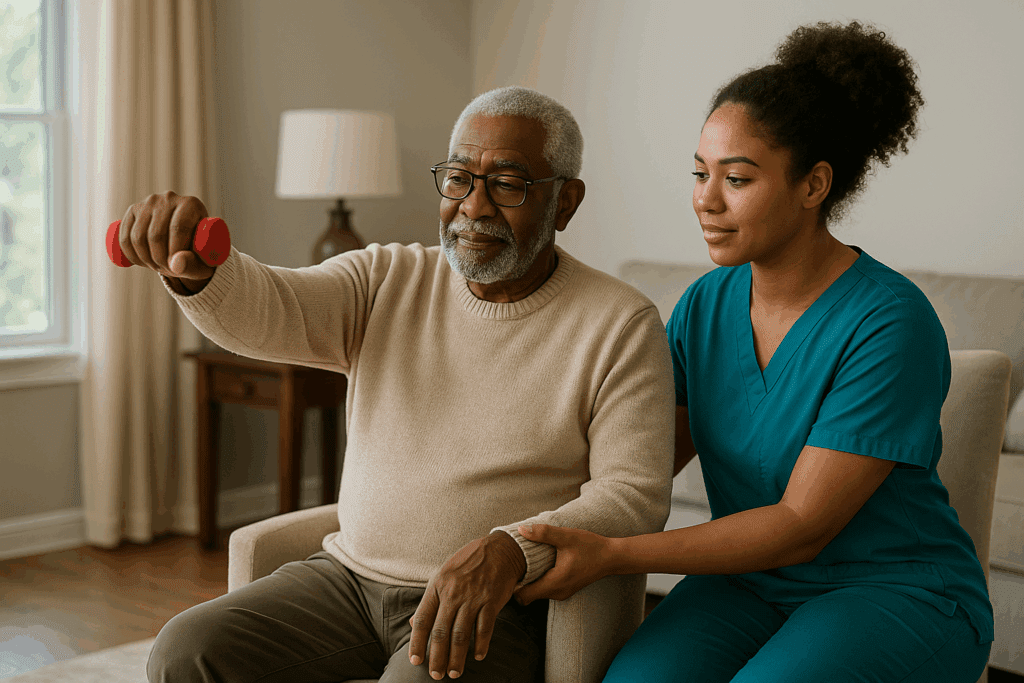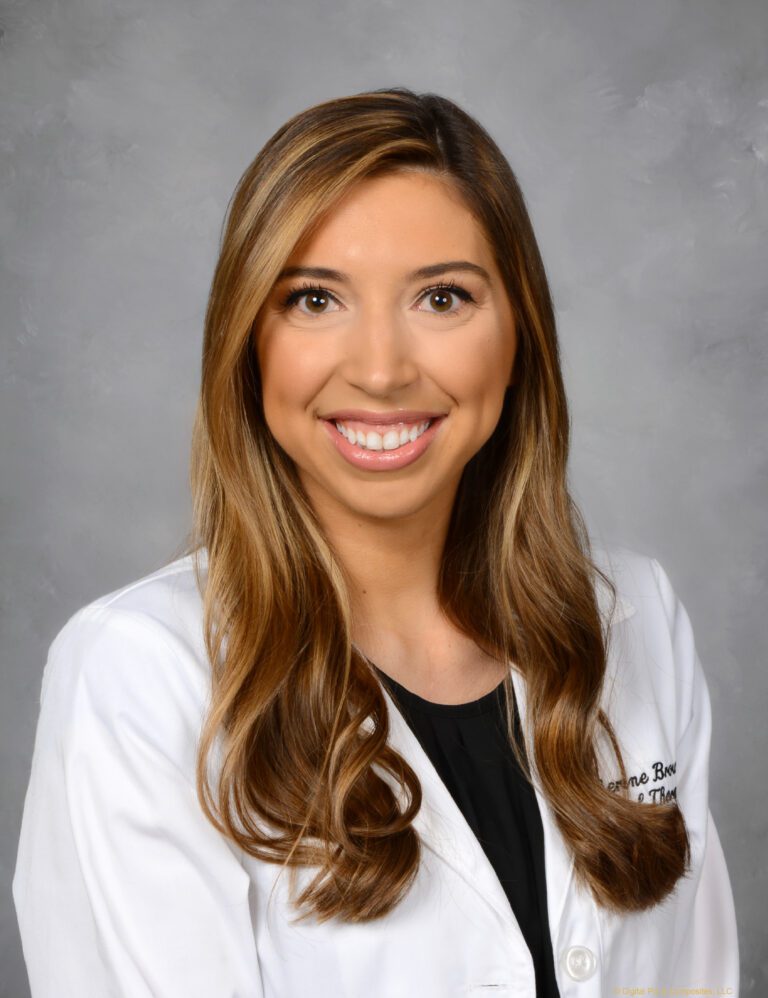Recovering from a stroke isn’t about perfect progress. It’s about meaningful moments, like walking your dog again or getting to hug your grandchild without help. To better understand what truly helps during stroke rehab, we turned to Katherine Brown, PT, DPT, a physical therapist with FOX Rehabilitation in Charleston. Katherine specializes in working with older adults and focuses her care around their goals, not generic timelines.
What Does Recovery Really Mean?
“The most important goals are what’s most important to the patient,” says Brown. “Some want to walk again. Others want to attend a wedding or just make their own cup of coffee. To me, it’s about regaining as much independence and quality of life as we can, as soon as we can.”
She’s seen firsthand how motivation tied to something personal keeps people going, even when it’s hard.
Consider George, 72, from Mount Pleasant, SC. He had his stroke just weeks before his granddaughter’s piano recital. “I didn’t care if I used a walker,” he said. “I just wanted to be sitting in that front row, clapping.” With therapy and home exercises, he made it to the recital, and stood up, briefly with support, for a standing ovation. These small but meaningful wins can’t be measured on a chart. But they’re everything.

Exercises That Actually Fit Your Life
Katherine creates plans built around what each person wants and needs. “We look at their life before the stroke, how the stroke affected them, and what they hope to do again,” she explains. “That could mean focusing on stairs, cooking, or even just sitting upright without getting dizzy.”
Safety is always first, but challenge is part of the process too. “Even older adults can surprise themselves with what they can do, given the right support.”
One ZestYears contributor, Florence, 68, shared this:
“After my stroke, I couldn’t tie my own shoes. My therapist never made me feel small about that. We worked on hand strength with putty, buttons, and even tying shoelaces on a fake foot. Three weeks later, I tied my own. I cried.”
What Families Should Know
“Caregivers matter just as much as the patient,” Katherine says. “People don’t talk about the emotional side enough. Recovery isn’t just physical, it’s mental.”
Many family members feel overwhelmed and unsure how to help. The best approach? Ask questions. Be present. And don’t push a positive outlook too hard.
“Patients want hope, but not sugar-coating,” Katherine says. “Families and patients both do better when they trust the team, and when they know why they’re doing certain exercises.”
“Progress isn’t always leaps and bounds. Sometimes, it’s baby steps, and that’s still progress. Celebrate what you can do today that you couldn’t do last week.”
— Katherine Brown, PT, DPT
What Progress Actually Looks Like
Every stroke is different, but the first six months are usually the most important for regaining function. That doesn’t mean the road is easy. Progress might look like wiggling a toe one day, or walking to the mailbox the next week.
“Most patients don’t improve in big, dramatic ways,” Katherine explains. “They get a little better every day. When they realize that, they stop comparing themselves to how they were before the stroke—and start feeling proud of what they’ve done today.”
It’s also essential to stay active after formal therapy ends. A personalized home exercise plan, a support group, or even light gym classes can help maintain momentum. The CDC notes that physical activity after a stroke can improve strength, balance, and mental health.¹
About the Expert:

Katherine Brown, PT, DPT
Katherine is a physical therapist with FOX Rehabilitation in Charleston, SC, focusing on post-stroke care for the 55+ community. With experience in acute care, inpatient rehab, and pediatrics, she brings a patient-centered, empathetic approach. Originally from Auburn, Alabama, Katherine lives on Daniel Island and is passionate about helping seniors live stronger, more confident lives.
Sources:
Centers for Disease Control and Prevention (CDC): Older Adults and Physical Activity
American Stroke Association: Stroke Recovery and Rehabilitation




